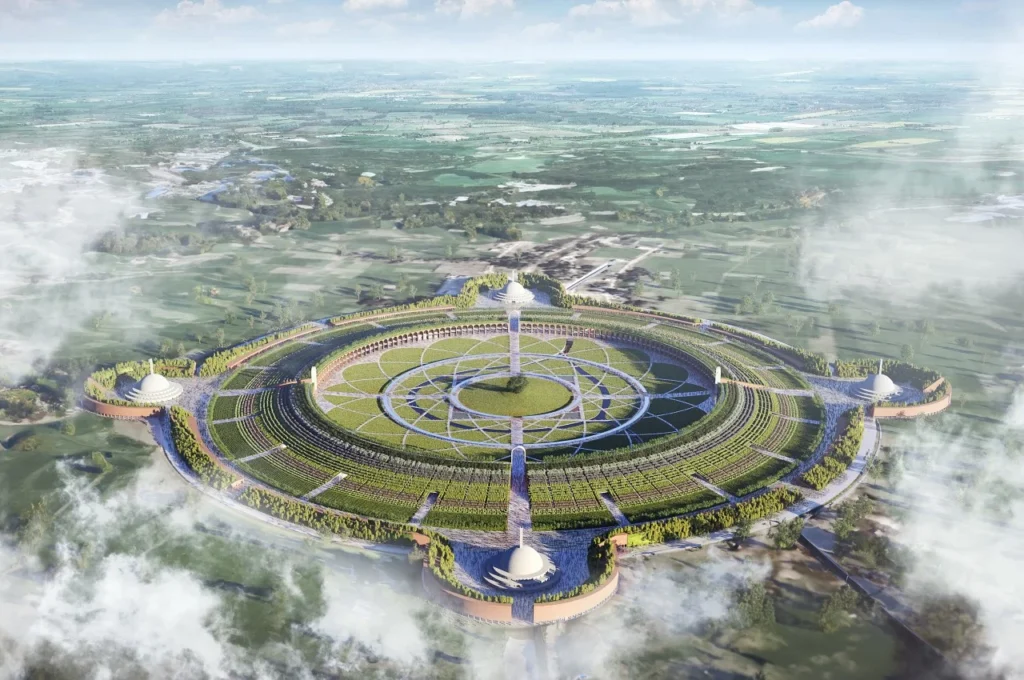
People typically associate religious sites with elaborate structures, but some sacred places, like a simple mound and tree, hold historical and spiritual value. In Buddhism, a plain mount with a distinctive tree preserves relics. To honor its significance, a plan envisions transforming this site into a biodiversity garden with a touch of fantasy film aesthetics.
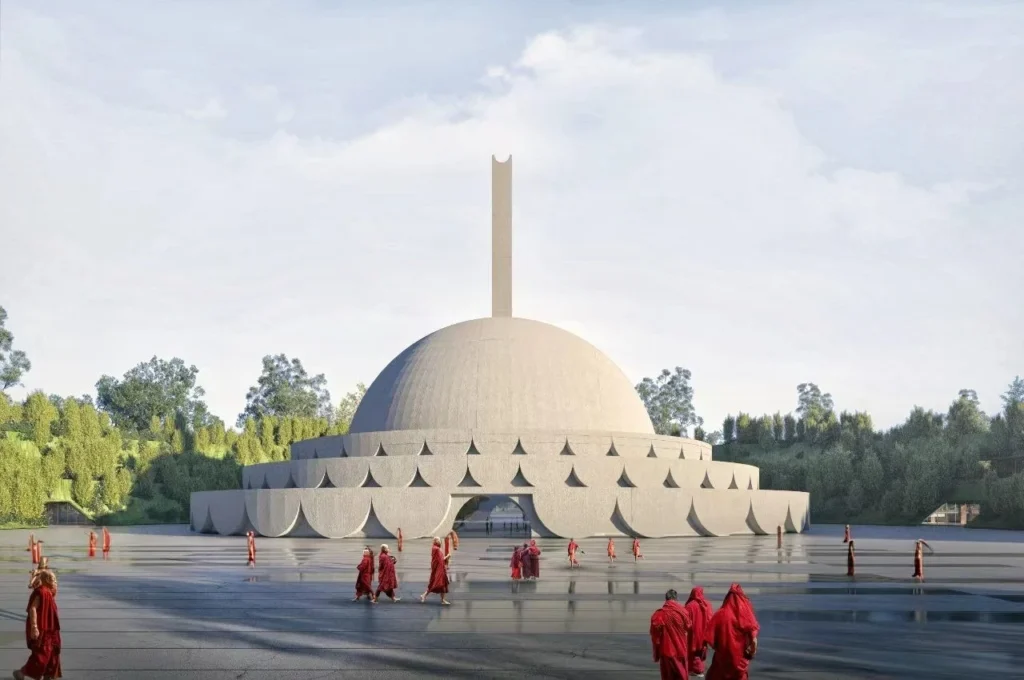
In western Nepal, the Ramagrama Stupa is a crucial Buddhist site with religious, historical, and cultural significance. It features a centuries-old Bodhi tree atop a green hill, preserving Buddha’s relics in a dirt burial mound. The unchanged landscape is at risk, so a master plan is necessary to safeguard its natural beauty and enable safe exploration by believers and tourists.

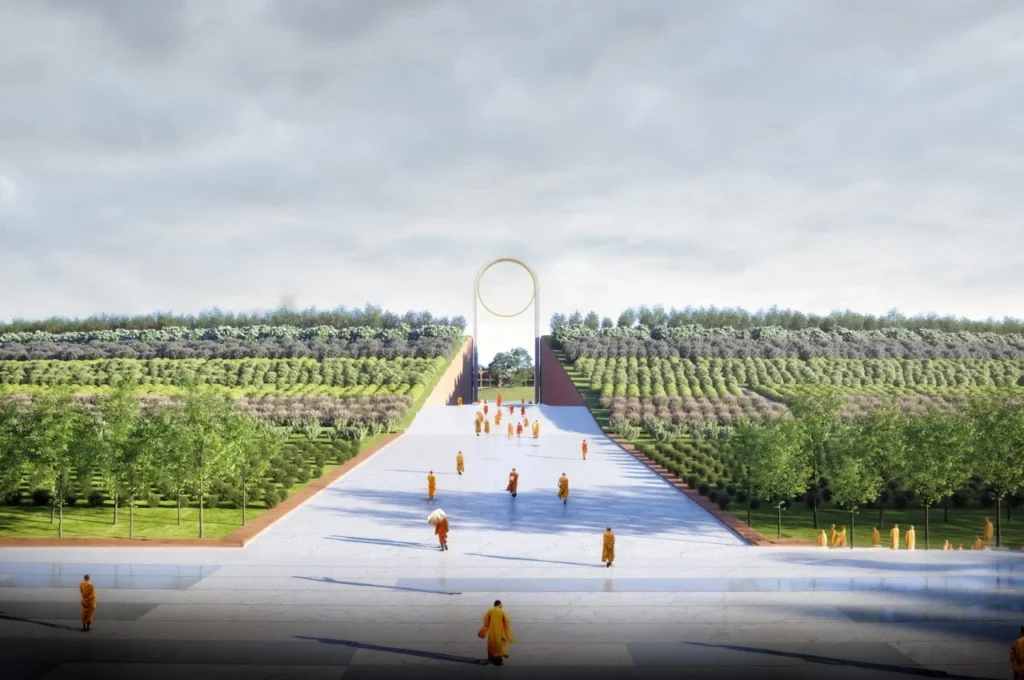
The design solution ensures a spacious and respectful environment around the stupa and Bodhi tree, preserving historical landmarks. Covered walkways encircle the hill, forming a captivating mandala visible from the skies. Four portals in each direction divide the area into quadrants, with access roads leading to the central hill.
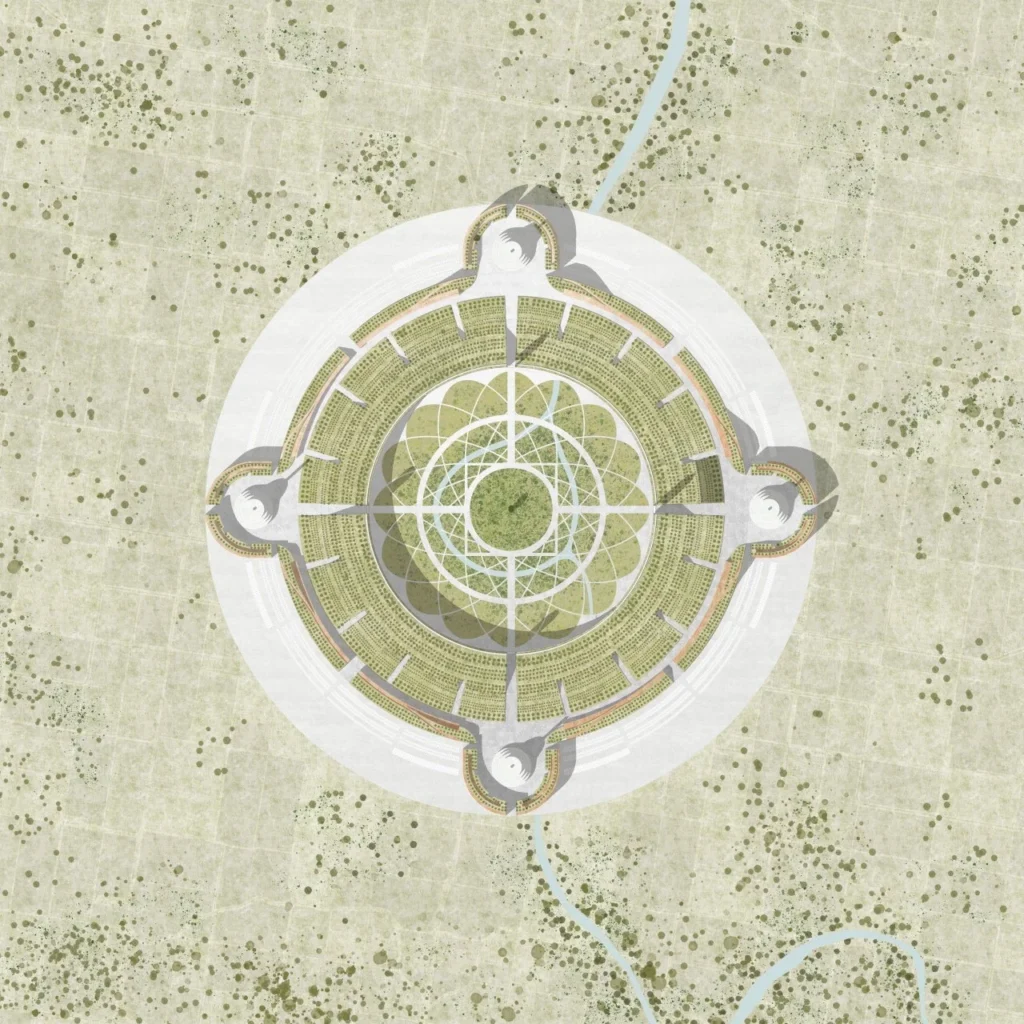
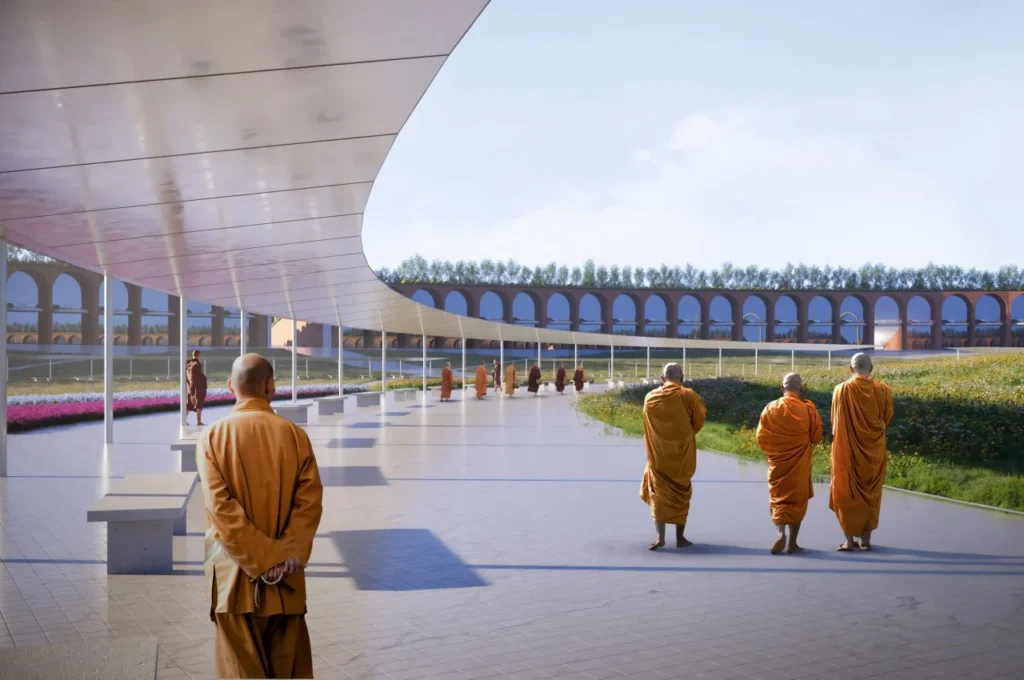
The contemplative “Prato della Pace” is encircled by the Garden of Biodiversity, featuring 80,000 plants from the Buddha’s birthplace. A shaded path with trees offers a scenic view of the Ramagrama Stupa from a distance, separating the two circular areas.
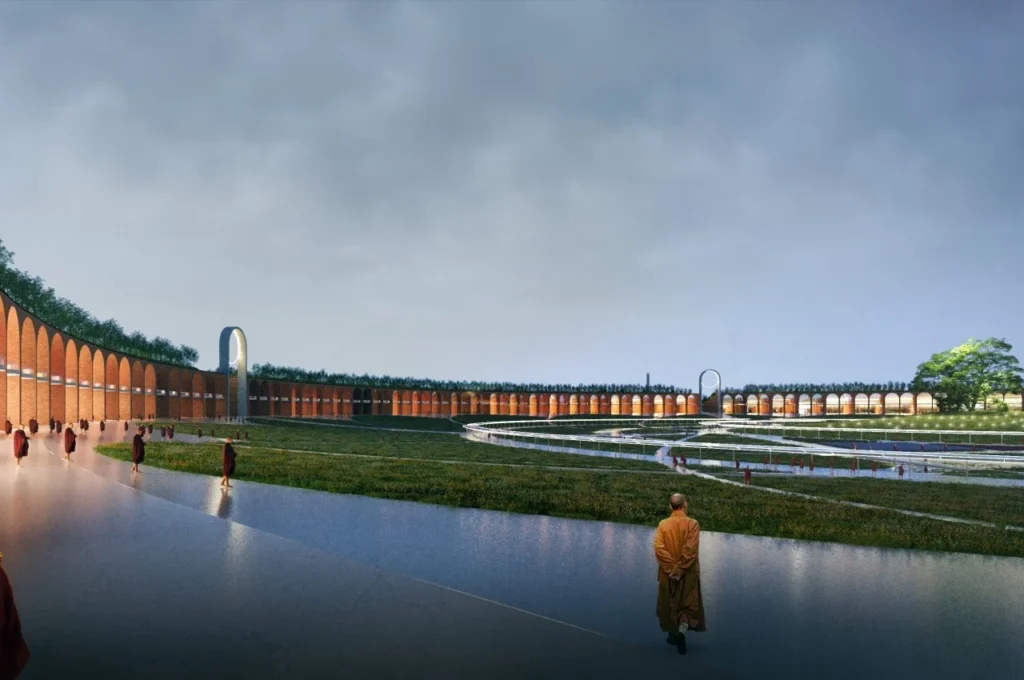
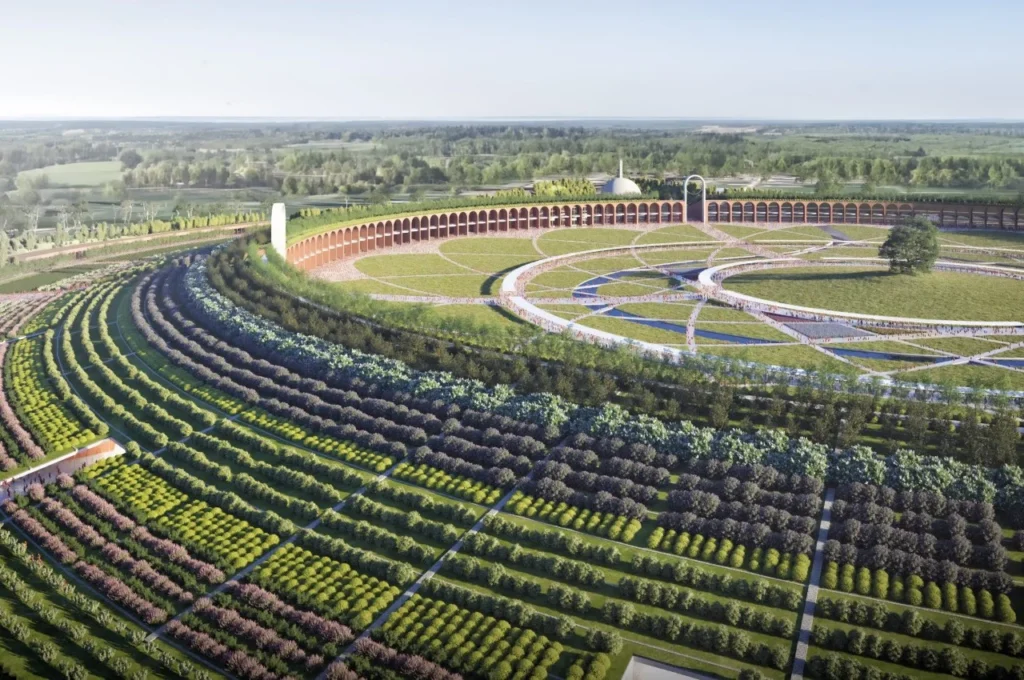
The ambitious master plan for the Ramagrama Stupa combines Buddhist elements in a harmonious blend of architecture and landscaping. Minimalist structures and circular paths evoke both simplicity and mystique, providing visitors with a space for prayer and admiration. The rich biodiversity honors the Bodhi tree, symbolizing the botanical legacy of Buddhism for future generations. The design exudes a sense of mysticism and wonder, grounding itself on earth while appearing ethereal.


